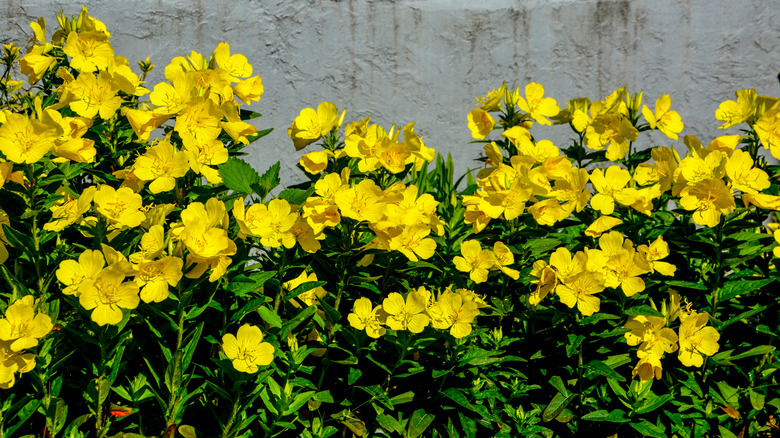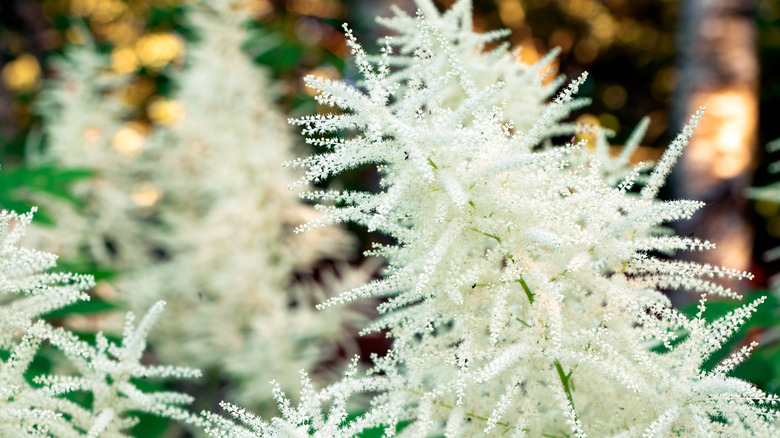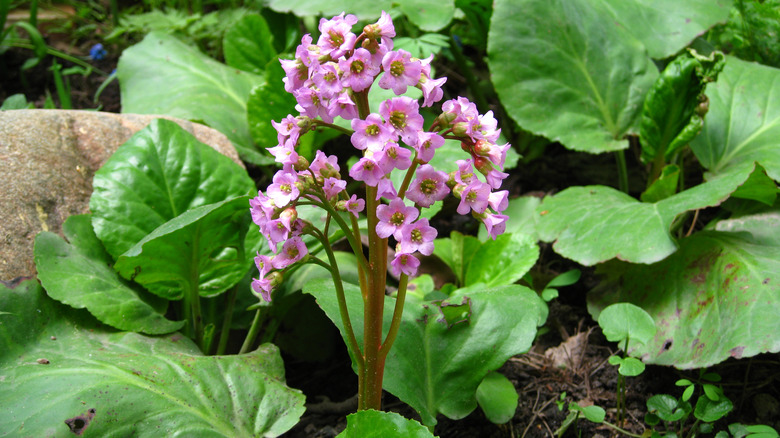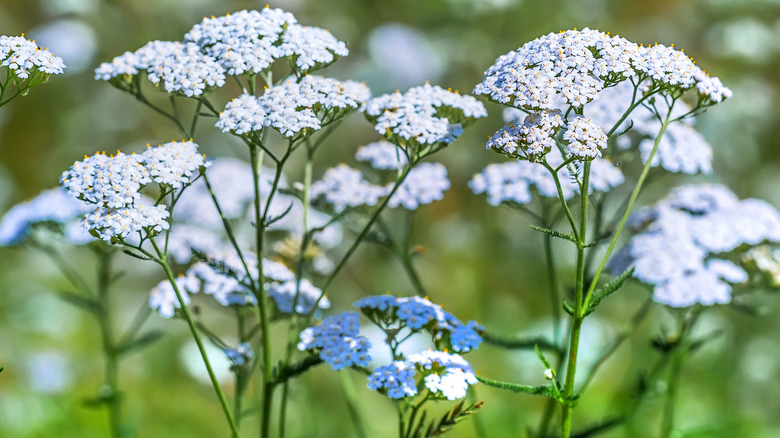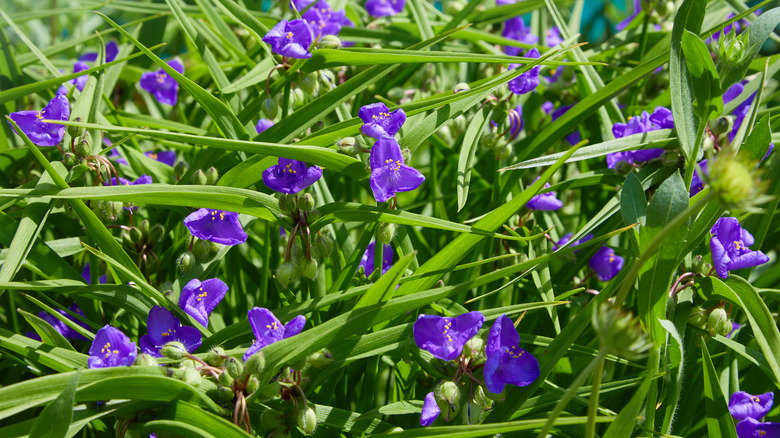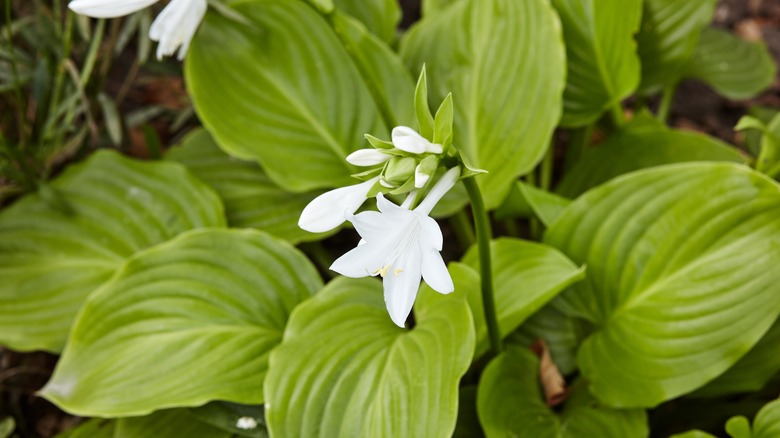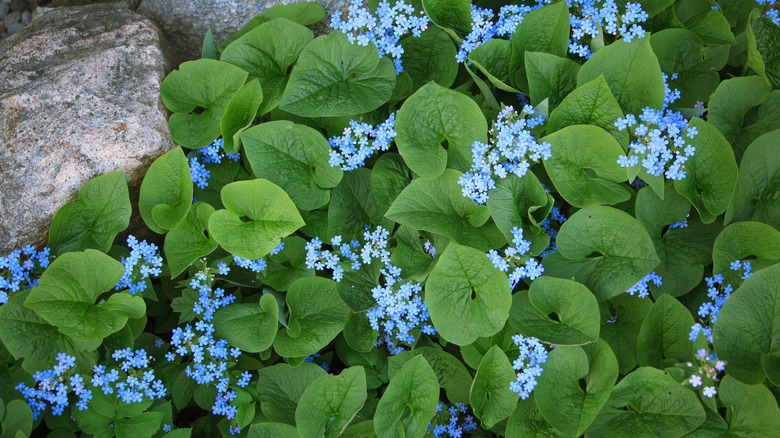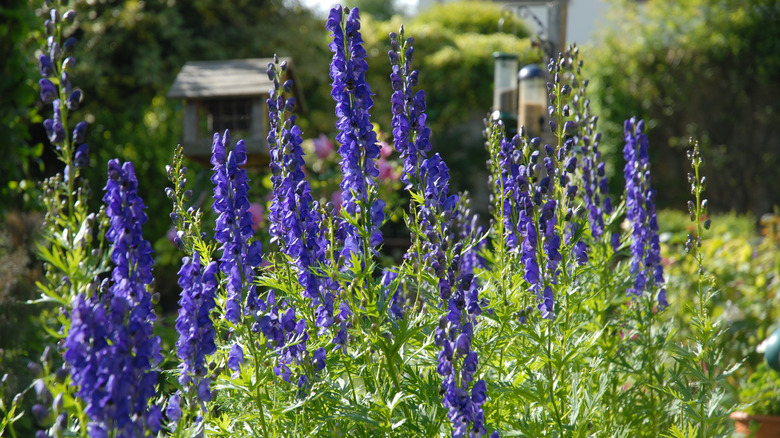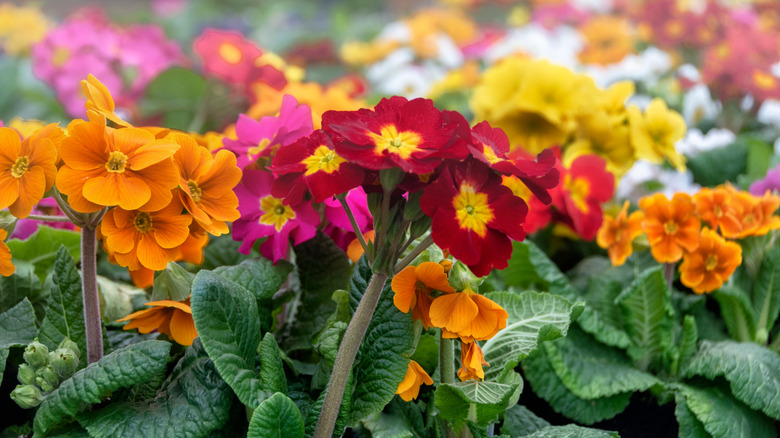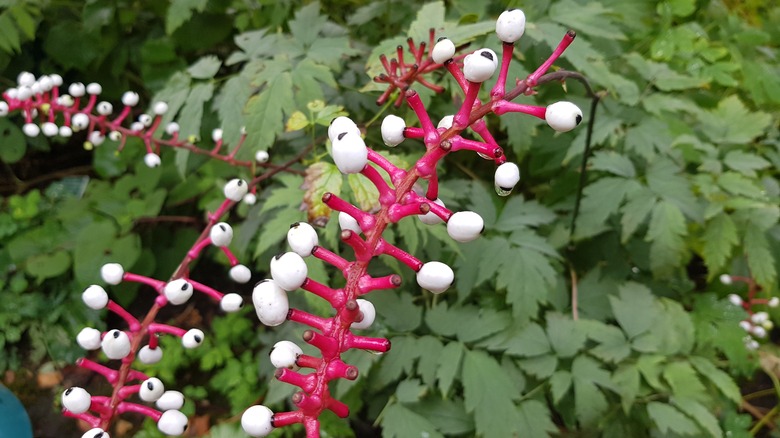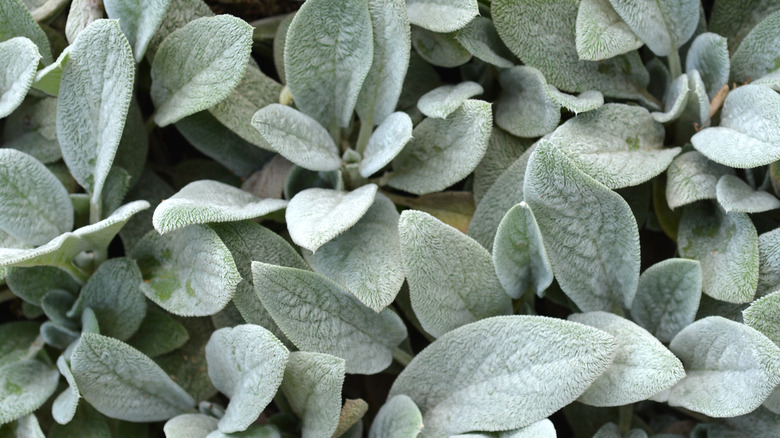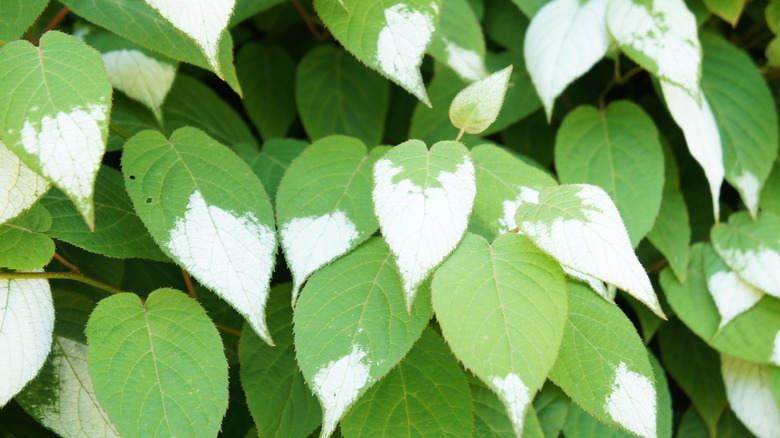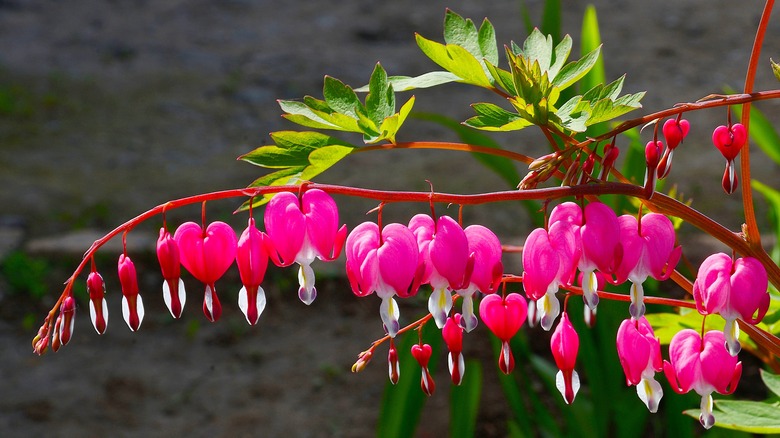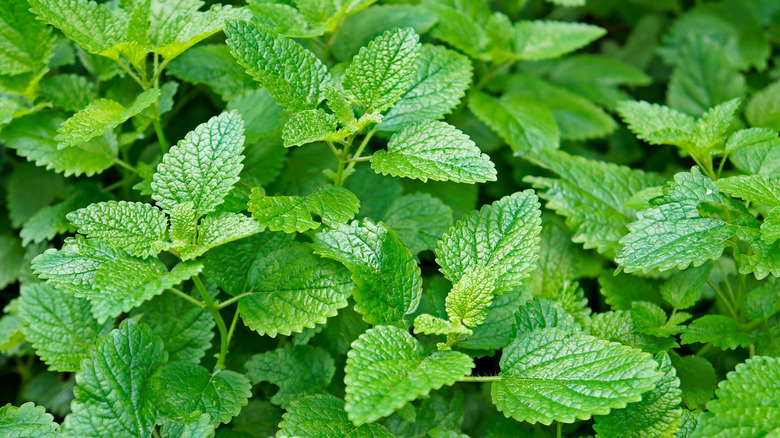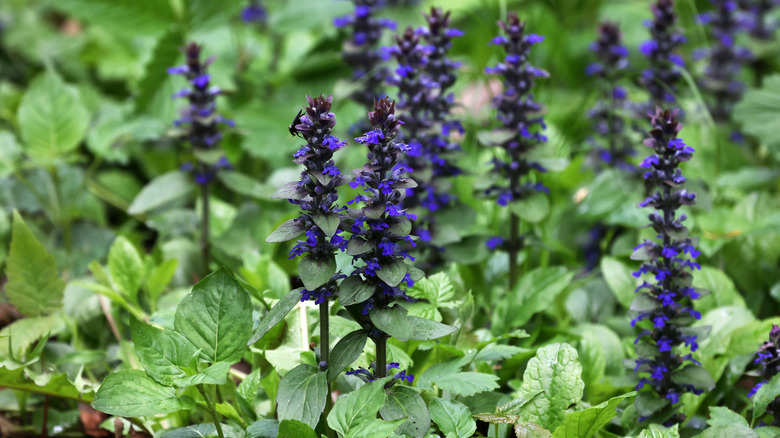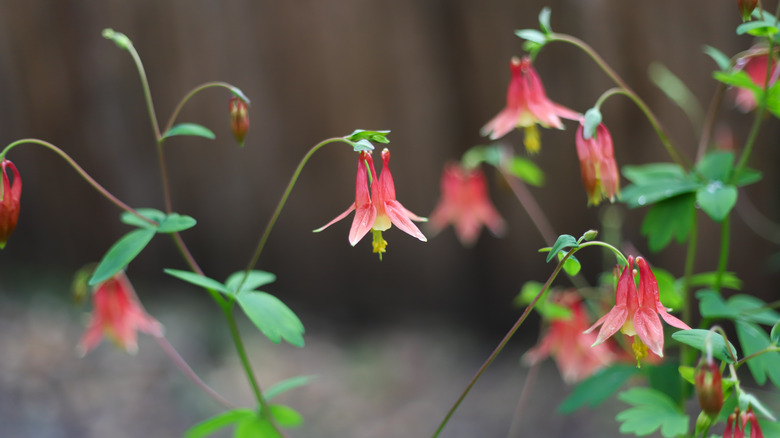15 Best Plants To Grow In USDA Zone 4
If you live in the colder part of the United States, such as zone 4, it can be difficult to find unique, colorful, and long-lasting plants to create a visually interesting garden. States in zone 4 include Idaho, Montana, Wyoming, Minnesota, Colorado, North Dakota, and more as shown by the Library of Congress. These northern states struggle to produce the large, brightly colored plants that we often see in our southern regions.
Many of the beautiful flowering plants we love, like Hibiscus, Verbrenum, and Lantanas, can only grow in places where temperatures never drop too low. Most often, they won't survive the cold spring weather or temperature drops during the night. Still, there are lots of gorgeous plants that can withstand chillier environments, you just have to know where to look. From fragrant bloomers like primroses to broadleaf perennials like lamb's ear, here are our favorite plants that can grow in USDA hardiness zone 4.
Goat's beard
Goats beard (aruncus dioicus) is a dioecious perennial that is loved for its bushy shape and feathery flowers, as per the University of Wisconsin-Madison. It is native to western Europe and the eastern and central parts of the United States. This relatively low-maintenance plant makes a great companion to other woodland wildflowers such as bloodroot, Jacob's ladder, and Virginia Bluebells.
Bloom Season: Late spring and summer
USDA Growing Zone: 3 to 8
Growing Conditions: Partial shade to full sun
Soil Type: Moist, rich
Size: 8 inches dwarf varieties to 4 feet tall
Bergenia
Bergenia (bergenia crassifolia) is native to the forested regions of China and Siberia, states North Carolina State Extension. It produces small, tubular flowers that may appear cream, pink, purple, or red. Because this type of plant is tolerant to drought, poor soil, and shade, it is recommended for shade gardens, rock walls, walkways, and mass plantings.
Bloom Season: Spring
USDA Growing Zone: 3 to 8
Growing Conditions: Full shade to full sun
Soil Type: Clay, sand, loam
Size: 1 foot tall to 2 feet wide
Yarrow
Yarrow (achillea millefolium), also known as bloodwort, soldier's woundwort, and milfoil, is a plant with great medicinal properties. Though its foliage is not particularly attractive, the plant is valued by gardeners for its white, pink, and yellow flowers, via Clemson Cooperative Extension. Yarrow is best used as a border plant paired with other flowers such as Butterfly Milkweed, Columbine, or Joe-pye weed.
Bloom Season: Mid-spring to summer
USDA Growing Zone: 3 to 9
Growing Conditions: Full sun to partial shade
Soil Type: Nutrient-poor and dry
Size: 3 feet tall and 1 foot wide
Smooth spiderwort
Smooth spiderwort (tradescantia ohiensis) is a flowering perennial native to eastern and central North America as described by North Carolina State Extension. Its purple and blue flowers, which sit atop grass-like stems, feature three petals each and only last for one day after they bloom. Try planting your smooth spiderwort along walkways, in a drought-tolerant garden, or as a mass planting.
Bloom Season: Spring and summer
USDA Growing Zone: 4 to 9
Growing Conditions: Full sun to partial shade
Soil Type: Clay, sand, or loam
Size: 2 to 3 feet tall and 1 to 2 feet wide
Hostas
Hostas (hosta plantaginea) are medium-sized mounding perennials that are prized for their large green leaves. They can be planted in the garden or in containers where they will slowly grow and spread. Good companion plantings for Hosta plants, notes UIC Heritage Garden, include bleeding hearts, dianthus, false indigo, and geraniums.
Bloom Season: Mid-summer
USDA Growing Zone: 3 to 9
Growing Conditions: Partial shade
Soil Type: Well-draining
Size: 2 inches to 3 feet tall and 4 inches to 5 feet wide
Brunnera
Brunnera (brunnera macrophylla) is another broad-leafed perennial that features smaller blossoms. These flowers resemble forget-me-nots, as noted by the University of Wisconsin-Madison, and they appear by the hundreds all over this plant. Native to Eastern Europe, brunnera prefers to grow in woodland gardens where it will receive plenty of moisture and some shade.
Bloom Season: Mid-spring
USDA Growing Zone: 3 to 8
Growing Conditions: Partial shade to full sun
Soil Type: Well-draining
Size: 1 1/2 foot tall and wide
Monkshood
Monkshood (aconitum napellus) is a cool-weather-loving herbaceous perennial. This flower can be identified by its erect stems that produce hooded purple and blue flowers which gave the plant its name. Monkshood used to be referred to as wolfsbane when it was used to tip arrows meant to kill wolves in earlier times, explains Missouri Botanical Garden.
Bloom Season: Mid to late summer
USDA Growing Zone: 3 to 7
Growing Conditions: Full sun to partial shade
Soil Type: Organically rich and well-draining
Size: 2 to 4 feet tall and 1 to 1 1/2 feet wide
Primrose
Primrose (primula vulgaris) can be a difficult plant to care for, but its fragrant cream-colored flowers are worth the effort. This perennial is an early bloomer that is best used in containers, as a border plant, or along the edge of a pond, as suggested by North Carolina State Extension. However, be careful where you plant it as it is toxic to cats, dogs, and horses.
Bloom Season: Spring
USDA Growing Zone: 4 to 8
Growing Conditions: Partial shade
Soil Type: Clay or loam
Size: 3 inches to 2 feet tall and 4 to 8 feet wide
White baneberry
White baneberry (actaea pachypoda) is a herbaceous perennial known for its white berries that feature a single black spot. Due to this, the plant is also referred to as doll's eyes, as per Perennial Nursery Co. It produces fluffy white flowers that are replaced by berries in the early fall. Keep in mind that this plant has some very specific care requirements.
Bloom Season: Spring and summer
USDA Growing Zone: 3 to 8
Growing Conditions: Partial to full shade
Soil Type: Fertile and acidic
Size: 1 to 3 feet tall and 2 to 3 feet wide
Lamb's ear
Lamb's ear (stachys byzantina) is named for its wooly, gray-green leaves that can grow up to 4 inches long, as explained by Missouri Botanical Garden. This plant, native to Turkey, Iran, and Armenia, features flowering stems, but they are often removed by gardeners. The flowers are small and appear purple or pink. Most often, their erect stems will reach more than 10 inches above the large leaves of the plant.
Bloom Season: Early spring to mid-summer
USDA Growing Zone: 4 to 8
Growing Conditions: Full sun
Soil Type: Well-draining
Size: 1 1/2 foot tall and wide
Silvervine
Silvervine (actinidia polygama) is also called cat crack because of its effects on felines. It is similar to catnip as it can attract and intoxicate cats, says Keeping it Green Nursery. This deciduous vine, which is native to China and Japan, features fragrant white and yellow flowers as well as silvery-green foliage.
Bloom Season: Summer
USDA Growing Zone: 4 to 9
Growing Conditions: Full sun to part shade
Soil Type: Humus-rich and well-draining
Size: 1 foot to 3 feet tall
Bleeding hearts
Bleeding hearts (dicentra spectabilis) are native to China, Japan, and Korea. They are best used in cottage, shade, and wildflower gardens, as told by the University of Wisconsin-Madison. An easy plant to care for, bleeding hearts are used across the United States and many other parts of the world. They are prized for their pink and white heart-shaped flowers.
Bloom Season: Spring
USDA Growing Zone: 2 to 8
Growing Conditions: Full sun to partial shade
Soil Type: Humus-rich, clay, or sand
Size: 3 feet tall and 4 feet wide
Lemon Balm
Lemon Balm (melissa officinalis) is also known as lemon mint, garden balm, and sweet balm. The herb can be identified from its toothed heart-shaped leaves and insignificant, white flowers. This plant is commonly used in the kitchen to flavor desserts, teas, and soups. It can also be used to make perfume or for medicinal purposes, according to Utah State University.
Bloom Season: Early summer to early fall
USDA Growing Zone: 3 to 7
Growing Conditions: Full sun to partial shade
Soil Type: Rich and well-draining
Size: 2 to 3 feet tall
Carpet Bugle
Carpet Bugle (ajuga reptans) is a flowering plant typically used for groundcover in several regions of the United States. It bears tiny blue and purple flowers that are found on shoots high above the leaves, explains Washington State University. These blossoms make the plant highly attractive to butterflies, bees, and hummingbirds during the spring and summer.
Bloom Season: Mid-spring to early summer
USDA Growing Zone: 3 to 9
Growing Conditions: Partial shade
Soil Type: Moist and humus-rich
Size: 1 foot tall and 2 feet wide
Columbine
Columbine (aquilegia canadensis) is a low-maintenance plant that tolerates many soil types and growing conditions. It is sometimes also called red columbine or American columbine, as per Prairie Moon Nursery. Columbine plants produce uniquely shaped, red and yellow flowers that are great at attracting pollinators like bees, hummingbirds, and butterflies.
Bloom Season: Early spring
USDA Growing Zone: 3 to 8
Growing Conditions: Full sun to full shade
Soil Type: Well-draining
Size: 2 feet tall
